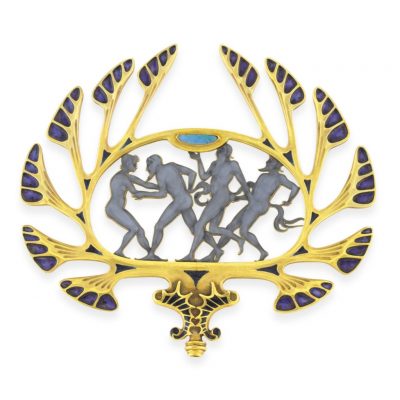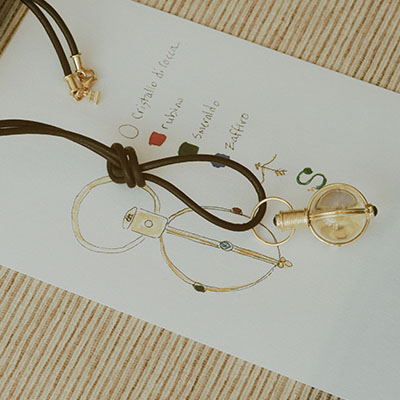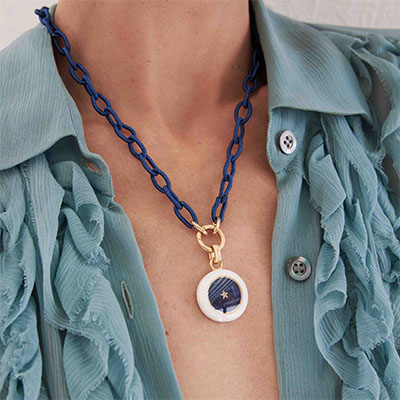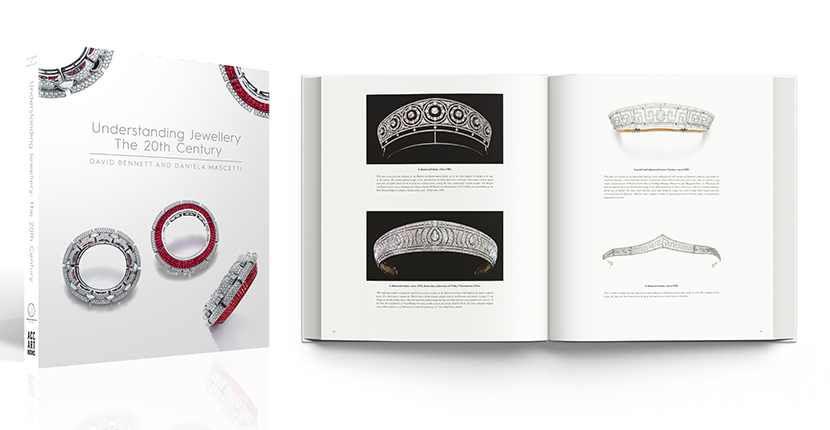
Understanding Jewellery: The 20th Century cover and a spread on the interior Photo courtesy ACC Art Books
Books & Exhibitions
The New Edition of ‘Understanding Jewellery’
It’s the perfect gift for jewelry lovers who want a foundation of knowledge
November 12, 2021—When your Instagram feed is full of jewelry images… When the novels you write center around great jewelers or missing tiaras or secrets about the Hope Diamond… When you compare Belperron pieces to the sculpture of Louise Nevelson and Brancusi… You wind up with friends who often don’t understand the nuances of your passion and yearn for a way to share a sense of your wonder.
I’ve found the perfect book that accomplishes just that and this holiday season I’m going to be gifting it over and over again.
Understanding Jewellery: The 20th Century by David Bennett and Daniela Mascetti is not a definitive book on the history of jewelry. It’s not a scholar’s tome. It’s not text heavy with a text book feeling.
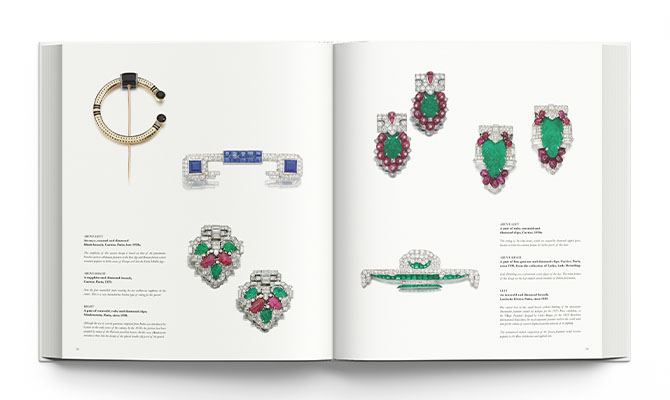
Understanding The Jewellery is a love letter to glorious pieces from the last hundred years. Page after page of unexpected delights take your breath away. Given Bennett’s and Mascetti’s history, that is no surprise. Both authors were leaders of Sotheby’s jewelry department with more than 80 years tenure at the venerable auction house between them.
In the past they have teamed up to write two other books, Celebrating Jewellery and the wildly popular first edition of Understanding Jewellery. Earlier this year they launched a platform for jewelry education and experiences that includes a website with a blend of free and subscription content also called, Understanding Jewellery.
So, this holiday season one copy of Understanding Jewellery goes to my friend Samantha who only shops brand name department store jewelry. I’m certain the eye candy in this book will introduce her to and open her eyes to the idea of vintage. I think it’s time for Sam to graduate to a tank bracelet like the one shown on page 106, A gold bracelet, by Boucheron, Paris, 1940s. The authors describe it as “A modest bracelet of strong geometric form, this would have been perfectly suited to the masculine lines of dress fashion during the war years.”
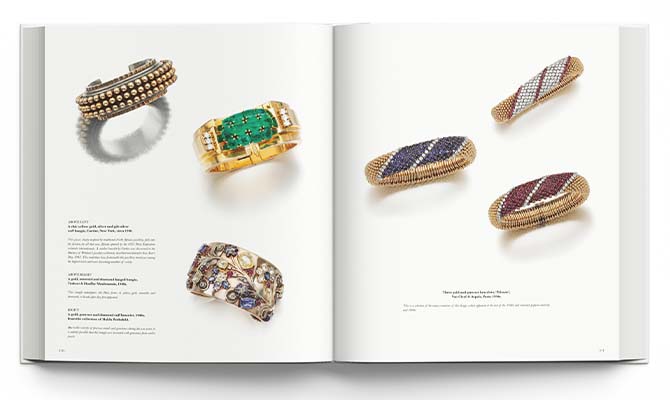
My nineteen-year-old niece, Diane, is getting a copy of this book as well. She thinks anything made before 1990 is old fashioned and not worth her time but I am hoping she can grow to appreciate what I love and I think this book will open her eyes to just how modern 80-and-90-year-old pieces can be.
I’ll include a note suggesting she take a look at page 170 at the yellow gold, silver and gilt-silver cuff bangle, Cartier, New York, circa 1940.
As the authors write: “This jewel, clearly inspired by traditional North African jewellery, falls into the fashion for all that was African spurred by the 1931 Paris Exposition Colonial Internationale. A similar bracelet by Cartier was discovered in the Duchess of Windsor’s jewellery collection, inscribed and dated for New Year’s Day, 1941. This underlines how fashionable this jewellery trend was among the highest levels and most discerning members of society.”
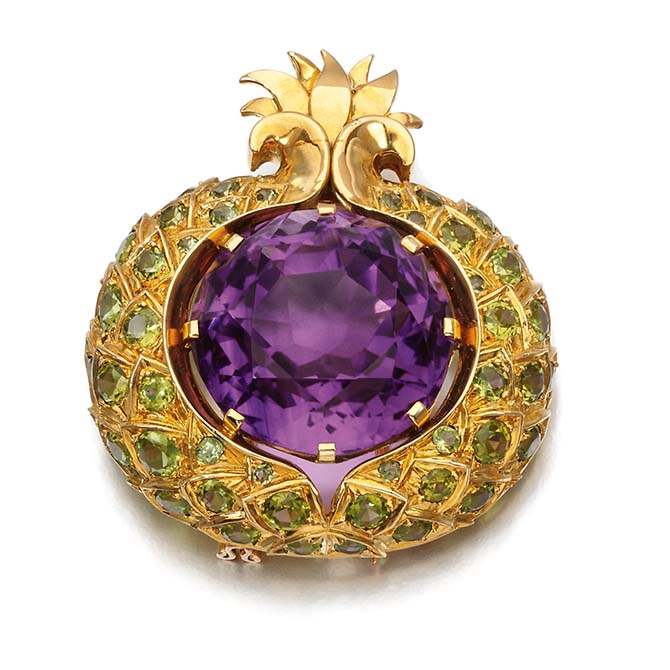
Another copy of Understanding Jewellery is going to a woman I work with, Aline, who is very matchy-matchy with her jewelry and doesn’t understand why I keep telling her she’s too cautious. I want her to look through some bright and exciting combinations of stones. First the gold, amethyst and peridot brooch/pendant, ‘Ananas’, René Boivin, Paris, circa 1945 on page 157.
“Peridot and amethysts are not a common combination, but they are one which Boivin used here to great effect. Note the textured gold imitating the skin of the fruit.“
Next, I want her to look in the section entitled, From Revolutionary Ideas To The Importance Of The Brand. 1960-1980. I’m going to tell her to focus on a gold, diamond and gem-set necklace, ‘Jasmin’, Jean Schlumberger, Paris, 1973.
“Schlumberger’s love for nature and unusual coloured gemstones is evident in this impressive necklace, whose prototype was first designed as early as 1963. Jean d’Ormesson, pointing out the unique nature of Schlumberger’s creations, wrote: ‘The world of Schlumberger is situated at the point where dream, nature and history meet. […] Nothing could be further removed from fashion than Schlumberger’s objects. Heedless of elegance or a dangerously slick chic, they proceed directly from desire to beauty. They feed upon architecture, and fauna, and flora, and illuminated manuscripts and distant memories of places and periods – the tropics or the Middle Age.” (Jean d’Ormesson, in Jean Schlumberger, (Milan: 1994, p.13)”
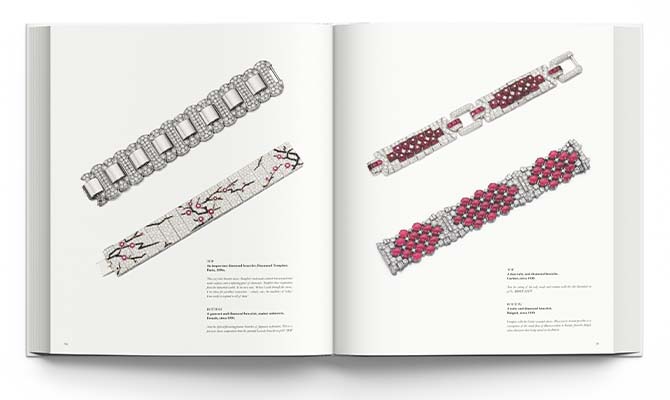
Looking through Understanding Jewellery makes you feel as if you are walking through the galleries at Sotheby’s examining what is on view for an upcoming important auction. It brings to mind that kind of carefully curated stunning exhibition. As an overview of the innovative 20th century, this book is truly a gem and a perfect stocking stuffer even if it’s a bit too big to fit in most stockings.
M.J. Rose is a New York Times bestselling author; her most recent novel, The Last Tiara (February 2, 2021) has been hailed by Publishers Weekly as: “Engrossing… A wonderfully twisty plot that keeps the reader wanting to know more… [a] winning story.”
Related Stories:
Augusten Burroughs Moonlights In Jewelry
Lust: My Grandmother’s Ruby Ring
Get a gem in your mailbox SIGN UP FOR THE ADVENTURINE NEWSLETTER
